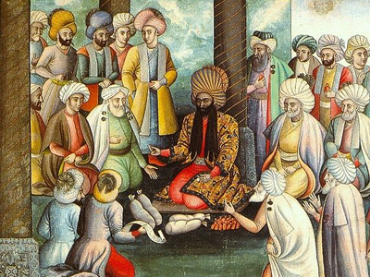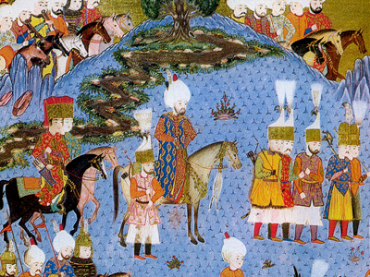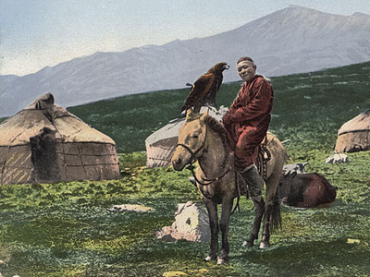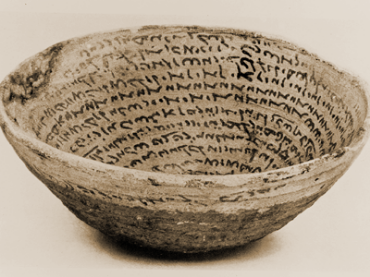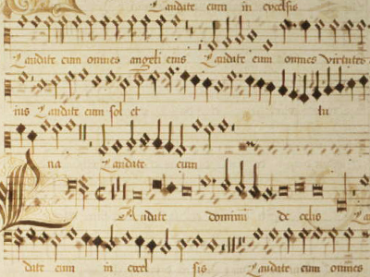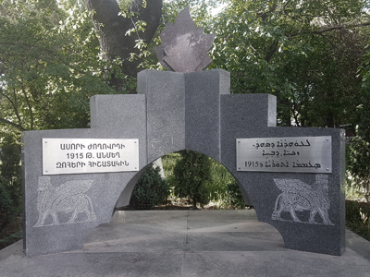History
Tribe and State
The Dynamics of International Politics and the Reign of Zimri-Lim
Series: Gorgias Studies in the Ancient Near East 8
ISBN: 978-1-4632-0249-1
This book analyzes Zimri-Lim’s interactions with sovereigns from the Habur and with Yamut-bal and Numha tribal polities. It describes how Zimri-Lim’s disproportionate dependence on tribal connections left him vulnerable when these alliances began to falter in his tenth regnal year.
$154.00
A Smyrneika Lexicon
The Language of Smyrna (Izmir, Turkey) Explained and Illustrated
ISBN: 978-1-4632-0251-4
A lexicon of Smyrneika, the Greek dialect that functioned as a lingua franca amongst the Levantine merchant communities of the Mediterranean. Rediscovering Turkey’s Ottoman past, including lost minority cultures… a study by three amateur lexicographers. The vocabulary is followed by a collection of proverbs and a series of dialogues illustrating the language and customs … “ Peter Mackridge www.oxford.academia.edu/PeterMackridge
$176.00
Epiphanius von Salamis, Über die zwölf Steine im hohepriesterlichen Brustschild (De duodecim gemmis
nach dem Codex Vaticanus Borgianus Armenus 31 herausgegeben und übersetzt
Series: Gorgias Eastern Christian Studies 37
ISBN: 978-1-4632-0279-8
At the request of Diodorus, bishop of Tyre, Epiphanius of Salamis produced this exegetical treatise on the gemstones in the High Priest's breastplate. The oldest Christian work on gemstones, the the author deals with the stones according to their appearance and their medical benefit as well as their attribution to the twelve tribes based on Christian exegesis. Only extracts of this work are preserved in Greek. This volume provides the important – but hereto unconsidered – Armenian text with a German translation and commentarial annotations, as well as an English introduction.
$120.00
Who is afraid of the rhētōr?
An analysis and exegesis of Socrates and Gorgias' conversation in Plato's Gorgias
ISBN: 978-1-4632-0258-3
This book concentrates on the conversation between Socrates and Gorgias which takes place in the first part of Plato's Gorgias. Scholars have tended to concentrate on the following two conversations held by Socrates with Polus and, especially, with Callicles. This first, relatively short, conversation is usually taken to be a kind of preface coming before Plato's 'real' philosophy. The present study challenges this assumption, arguing that the conversation between Socrates and Gorgias actually anticipates the message of the whole dialogue, which concerns the essence of rhetoric and its implications.
$169.00
The Gnomai of the Council of Nicaea (CC 0021)
Critical text with translation, introduction and commentary
Edited and Translated by Alistair C. Stewart
Series: Texts from Christian Late Antiquity 35
ISBN: 978-1-4632-0260-6
The first English translation and first complete critical text of a neglected moral treatise from fourth-century Egypt, throwing fresh light on the social history of Egyptian Christianity and on the growth of the church-order tradition.
$43.00
Bishop Lists
Formation of Apostolic Succession of Bishops in Ecclesiastical Crises
ISBN: 978-1-4632-0266-8
Early lists of bishops, identified by Walter Bauer as "literary propaganda," mark critical points in the development of the doctrine of the apostolic succession of bishops. This study delves into the political struggles surrounding the lists and the doctrine they served to define. Ecclesiastical politics in each case reflects the threat to the bishop's authority and clarifies the meaning of apostolic succession in the Church's development. This social history approach, examining the function of the literature within its historical circumstances, reveals how theology developed from politics. The development is as gripping politically as it is illuminating theologically.
$98.00
"Blessed is He who has brought Adam from Sheol" (paperback)
Christ's Descent to the Dead in the Theology of Saint Ephrem the Syrian
Managing Editor Joseph Knanishu
ISBN: 978-1-4632-0267-5
Buchan’s work is an examination of the theological use of the doctrine of Christ's descent to the dead in the works of Saint Ephrem the Syrian (ca. 306-373 C.E.). Ephrem's conception of Christ's descent to Sheol provides us with an important and distinctive vision of the significance of this salvific event. Ephrem's use of Semitic and non-Western poetic forms and structures as a mode of theological discourse, coupled with his preference for imagery and symbolism rather than definition, resulted in a variety of vivid depictions of Christ's descent to Sheol. The doctrine is shown to be an integral and multifaceted component of Ephrem's theology.
$128.00
Teacher of Holiness
The Holy Spirit in Origen's Commentary on the Epistle to the Romans
ISBN: 978-1-4632-0268-2
This book, on the pneumatology of Origen's Commentary on the Epistle to the Romans, illustrates the centrality of the Holy Spirit for his theological project. As both God's exitus into the world and humanity's reditus to God, the Spirit forms the crucial link between Origen's doctrine of God and his spiritual anthropology. Origen's images for the Holy Spirit, understood in the context of second century concepts of 'spirit,' convey the intersection of theology and anthropology in his thought. This book explores Origen's understanding of the multiplicity of spirits found in the Scriptures, with particular emphasis on the Holy Spirit as pivotal to God's outreach into the world.
$89.00
Christians under the Ottoman Turks
French and English Travellers in Greece and Anatolia (1615-1694)
Series: Gorgias Ottoman Travelers 2
ISBN: 978-1-4632-0591-1
In the 17th century Britons left their country in vast numbers - explorers, diplomats, ecclesiastics, merchants, or simply “tourists.” Only the most intrepid ventured into the faraway lands of the Ottoman Empire. Their travel narratives, best-sellers in their day, provide an entertaining but also valuable testimony on the everyday life of Orthodox Christians and their coexistence with the Turks. Greek Christians, though living under the Ottoman yoke, enjoyed greater religious freedom than many of their brothers in Christian Europe. The travelers’ intellectual curiosity about Greece opened a window on the Orthodox Church, and paved the way for future dialogue.
$106.00
The Syriac Writers of Qatar in the Seventh Century
Series: Gorgias Eastern Christian Studies 38
ISBN: 978-1-4632-0355-9
The Syriac writers of Qatar themselves produced some of the best and most sophisticated writing to be found in all Syriac literature of the seventh century, but they have not received the scholarly attention that they deserve in the last half century. This volume seeks to redress this underdevelopment by setting the standard for further research in the sub-field of Beth Qatraye studies.
$25.00
Salvation in Christ According to Jacob of Serugh
An Exegetico-theological Study on the Homilies of Jacob of Serugh on the Feasts of Our Lord
ISBN: 978-1-4632-0382-5
Jacob of Serugh’s vision of ‘Salvation in Christ’, in its exegetical, theological, catechetical, liturgical and pastoral aspects, is reviewed in this monograph. Jacob’s mode of symbolic-mystical-silence approach to the mystery of Christ is explained. This treatise gathers up Jacob’s typological and symbolic thought-patterns, in his own language, categories, terminologies, and imageries.
$164.00
Teachings on the Prayer of the Heart in the Greek and Syrian Fathers
The Significance of Body and Community
By Jill Gather
ISBN: 978-1-4632-0383-2
The prayer of the heart is an early Christian contemplative tradition of striking profundity and beauty. Christian authors of the Greek- as well as the Syriac-speaking world placed the heart at the center of a mystical theology that viewed the body as a God-given instrument of divine ascent and the relational setting of Christian existence as an important means of experiencing God’s abiding inner presence. This work sheds light on the Syrian church’s approach to the mystery of the divine encounter.
$103.00
Standing At Lyon
An Examination of the Martyrdom of Blandina of Lyon
ISBN: 978-1-4632-0384-9
The suffering woman, Blandina, emerges as an archetypal figure of the martyrs of Lyon. This slave-woman ultimately arises to engage in battle with the powers of the Roman Empire. Through the application of Bowen Family Systems Theory and the writings of Michel Foucault the book explains the function of anxiety, and the dynamics at work in the system that result in the failure of Roman authority to use power to quell the rise of Christianity. The reactions of those who might appear to be the most powerful are essential in gifting power to this lowly slave.
$75.00
The Mark of Cain and the Jews
Augustine’s Theology of Jews and Judaism
ISBN: 978-1-4632-0385-6
This book examines the development of Augustine of Hippo’s theology of the Jewish people and Judaism. Formulating a typological association between the biblical figure of Cain and the Jews, he crafts a highly intricate theology that justifies and even demands the continuing presence of Jews and their religious practices in a Christian society. Such a theology emerges out of his highly original interpretation of Genesis 4:1–15 and yet mirrors and theologically justifies the reality of Jews and Judaism in the late Roman Empire.
$81.00
Aphrahat the Persian Sage and the Temple of God
A Study of Early Syriac Theological Anthropology
ISBN: 978-1-4632-0386-3
Aphrahat the Persian Sage, (fl. 337-345 C.E.), was a Syriac Christian author who wrote twenty-three treatises entitled The Demonstrations. This book examines “temple” as a key image for Aphrahat’s theological anthropology. The temple is central for both Jews and Christians; it is the place of sacrifice, meeting, and communication with the Divine. For Aphrahat, the devout Christian person may be a micro-temple which then allows one to encounter the divine both within oneself and through a vision ascent to the heavenly temple.
$91.00
St. Cyril of Alexandria, A New Testament Exegete
His Commentary on the Gospel of John
ISBN: 978-1-4632-0387-0
This study portrays Cyril of Alexandria as exegete and theologian through an examination of his Commentary on the Gospel John. It begins with an attempt to place Cyril and his commentary within their context. This work argues that Cyril wrote his Commentary on the Gospel of John early in his writing career, almost a decade before becoming bishop. Cyril’s commentary on the Johannine Gospel reveals his exegetical method and his strong Trinitarian theology. The commentary also focuses on the nature and work of the Holy Spirit: the indwelling of the Spirit is the beginning of the newness of life.
$117.00
Simple and Bold
Ephrem’s Art of Symbolic Thought
ISBN: 978-1-4632-0388-7
Ephrem the Syrian is known as one of the greatest Christian poets and as a unique author whose mode of thought is usually described as “symbolic.” In this work, Kees den Biesen explores the literary, intellectual, and theological mechanisms at work in Ephrem’s writings with the specific aim of identifying the exact nature of his “symbolic thought” and evaluating its contemporary relevance. Den Biesen elaborates a comprehensive approach that integrates a variety of methods into a genuinely theological methodology. He then proposes his own comprehensive understanding of the nature and merits of Ephrem’s symbolic thought.
$141.00
John Rufus and the World Vision of Anti-Chalcedonean Culture
Second Revised Edition
ISBN: 978-1-4632-0389-4
This book deals with the works of the anti-Chalcedonian hagiographer, John Rufus, and traces the basic motives behind the opposition against the council of Chalcedon in the fifth century through an attempt to reconstruct a specific anti-Chalcedonian culture. As part of the eastern monastic culture, it considered itself a counter-culture guarding purity of ascetic conduct and orthodoxy from being defiled by the perverseness of the majority. Reading John Rufus' hagiography, we find ourselves in the midst of a cosmological warfare between good and evil, where the great heroes of the anti-Chalcedonian movement enter into history as God's warriors against the rebellion of demons and heretics.
$85.00
Healing in the Theology of Saint Ephrem
ISBN: 978-1-4632-0390-0
Ephrem, the most celebrated writer of the Syriac Church, presents a wide range of theological themes and images that are characteristic of fourth-century Syrian Christianity. A significant theme that no one has yet studied in Ephrem is the concept of sickness and healing. This book presents the significance of healing theology and the ways in which the healing of man - spiritually, mentally, and corporally - is highly valued by Ephrem. The main part of the book deals with the causes of spiritual sickness and the process of healing, and the way in which Ephrem places them in the divine history of salvation.
$151.00
Negotiating Island Identities
The Active Use of Pottery in the Middle and Late Bronze Age Cyclades
By Ina Berg
Series: Gorgias Studies in Classics 31
ISBN: 978-1-4632-0392-4
Negotiating Island Identities explores the history of interaction between Crete and the Cycladic islands from the late Middle to Late Bronze II periods when Minoan influence was at its peak. Based on a thorough investigation of pottery assemblages from key sites, the book advocates a rethink of established acculturation scenarios (such as “Minoanisation”) in relation to the Cycladic islands. Openness or closure towards outside influences was not predetermined by cultural, geographical or ecological variables but was socially constructed. Island communities could consciously fashion their worlds and make choices about the nature and degree of interaction with their neighbours.
$90.00
"Epistolarity" in the First Book of Horace's Epistles
Series: Gorgias Studies in Classics 5
ISBN: 978-1-4632-0393-1
De Pretis’s book focuses on the epistolary features of Horace’s First Book of Epistles, reading them from points of view related to the epistolary form: the weight of the addressee; the dialogue between literary genres; the poet's self-representation; temporality; and the power of the author. These issues also pertain to literature as such, since all literature can be regarded, to a certain degree, as "epistolary." But the extent and consistency with which the Epistles explore epistolary aspects, can only be explained in terms of their generic affiliation.
$90.00
Introduction to the Grammar of Hebrew Poetry in Byzantine Palestine
By Michael Rand
Series: Gorgias Studies in Language and Linguistics 22
ISBN: 978-1-4632-0402-0
This book investigates the interaction between grammatical norms and poetic technique on the basis of a corpus selected from the oeuvre of the payyetan Eleazar be-rabbi Qillir. As a basis for this investigation, a descriptive/comparative analysis of the Qillirian dialect is offered. The first portion of the work is a grammar devoted mainly to morphology and syntax. The second portion of the work is an investigation of the poetic norms, as well as rhetorical techniques employed by Qillir, together with an assessment of their impact on the grammar. The overall aim of the project is to design an analytical framework within which a self-conscious poetic dialect might be investigated.
$165.00
Early Readers, Scholars and Editors of the New Testament
Papers from the Eighth Birmingham Colloquium on the Textual Criticism of the New Testament
Edited by H. A. G. Houghton
Series: Texts and Studies (Third Series) 11
ISBN: 978-1-4632-0411-2
A collection of ten original papers on the New Testament text, first presented in 2013, which reflect the diversity of current research. Examples of ancient engagement with the Bible include Origen, Eusebius of Caesarea and Augustine along with early translations.
$141.00
An East Syrian Manuscript of the Syriac 'Masora' Dated to 899 CE (Volume 2)
Introduction, List of Sample Texts, and Indices to Marginal Notes in British Library, Additional MS 12138
Prepared by Jonathan Loopstra
ISBN: 978-1-4632-0391-7
This unique manuscript of the East Syrian Syriac ‘Masora’ is essential for any study of early Syriac vocalization, accentuation, and punctuation. In Volume 1, Gorgias Press has published a facsimile reproduction of this unique ‘masoretic’ manuscript. This volume (Volume 2) includes an introduction and comprehensive lists of all scriptural sample texts and marginal notes in this compilation.
$228.00
The Martyrs of Mount Ber'ain
Edited and Translated by Sebastian P. Brock; Introduction by Paul C. Dilley
ISBN: 978-1-4632-0421-1
The Martyrs of Mount Ber’ain is the poignant tale of three noble Iranian siblings who are martyred under Shapur II. Composed in the seventh century, it demonstrates enduring concerns of Christian self-definition in Iran, especially with respect to the Zoroastrian priesthood.
$43.00
Filter by
Filter by price
Filter by manufacturer

